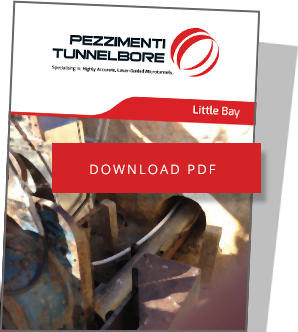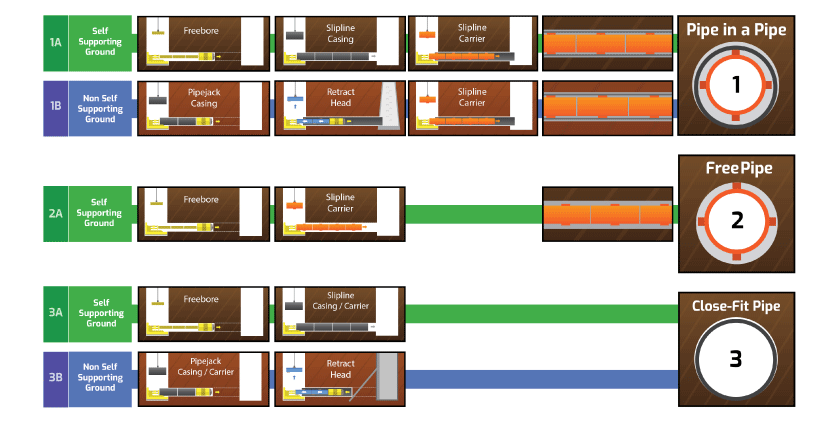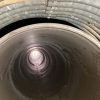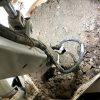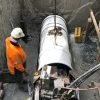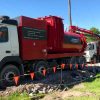PROJECT OVERVIEW.


Freebore Microtunnelling
The launch shaft was excavated by MMA Civil in competent sandstone at the grade required. A small bund was made around the high side of the shaft to minimise the potential for surface water to enter the shaft as flooding the shaft would flood the head on the steep grade.
Microtunnelling was completed by freeboring – the competent sandstone was allowed to self-support and no outer encasing pipe was required. Drilling took 5days, slowed down by significant water inflow which required draining prior to the start of each day. The head exited on target within the small exit shaft located on the eastern side of the 2 fairways.
The PVC pipes were sliplined into the sandstone microtunnel, the grout-retaining bulkheads were placed and 13.6m3 of grout was placed in 2 stages over 2 days to ensure the external buckling load of the PVC was never exceeded.
Environmental Aspects
One of the advantages of the removal of the spoil by vacuum is that during breakthrough of the microtunnel, there is NO loss of the slurry spoil into the exit shaft and hence zero risk of a spill into the environment. All cuttings are vacuumed up along the drill rod system back into the vacuum bins or vacuum truck.
This is not so with horizontal directional drilling where allowance must be made for the rapid loss of the drilling fluid at breakthrough when drilling in a negative (downhill) direction. This is because HDD requires the bore to be full of fluid in order to remove the cuttings.
In this case an exit shaft of 20m3 would have been required to mitigate loss of drilling fluid to the environment.

Excavated shaft
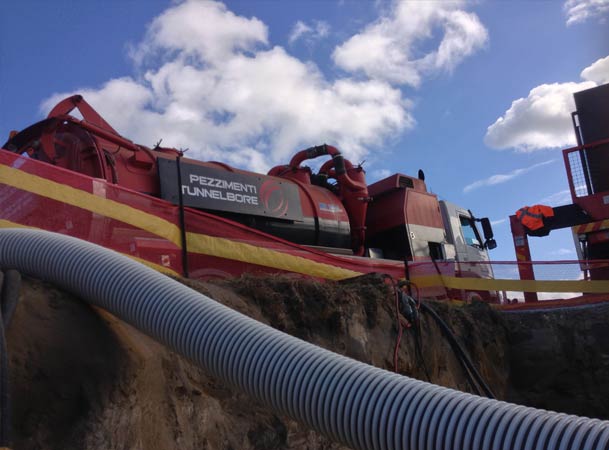
View from the shaft floor.
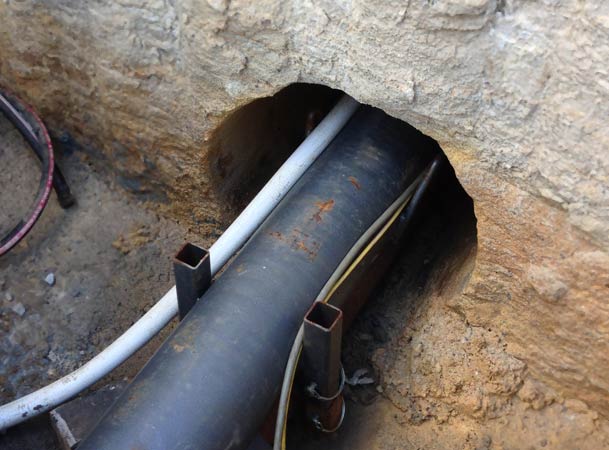
The competent sandstone allowed freeboring.

